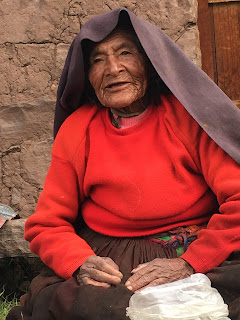Boat trip went smoothly 3/16/2025
Sometimes this huge lake can have big waves and winds, but we were lucky this time with a calm passage. When tourists are on the boat, we stop at the floating islands of Uros, where the totora reeds not only make up the islands themselves, but are used to build houses and sculptures and boats.
Condor sculpture made of totora reeds
A piece of a new island in the making, towed by motor
School Opening Ceremonies
All the schools gathered in Taquile’s main plaza to inaugurate the opening of the school year: kindergarten, primary, and secondary. The mayor and principals and school officers gave speeches. Teachers performed dances! Students received gifts of notebooks and pens.
Reconnecting and trade goods/gifts
Our suitcases were full, with a foldable portable solar panel, a weatherproof fishing coat, books and toys.
¡Esperar no es Fácil!
Waiting is Not Easy!
Elen has this book memorized within two weeks!
Twisty little metal puzzles livened up our evenings.
My “granddaughter” is nearly 5 years old. Smart, curious, and fun. “Quieres jugar pelote?” usually starts our mornings.
Good
itious Food
Silvano and Clever regularly go fishing with uncle Alipio, setting nets at night and gathering them in the wee hours of the morning. We eat very well.
Fresh Ispi, a native fish
In addition to the fish soup, salty, crispy Ispi are like fishy potato chips. Quite yummy.
Extra Ispi are set on rocks in the sun to dry.
Also, typically steamed with potatoes and chuño
This dish, caldo con pejerrey (kingfisher) was served with a piquante sauce of chili, the herb huatacay and onion all ground together in a mortar
And, of course, trucha a la plancha
























































